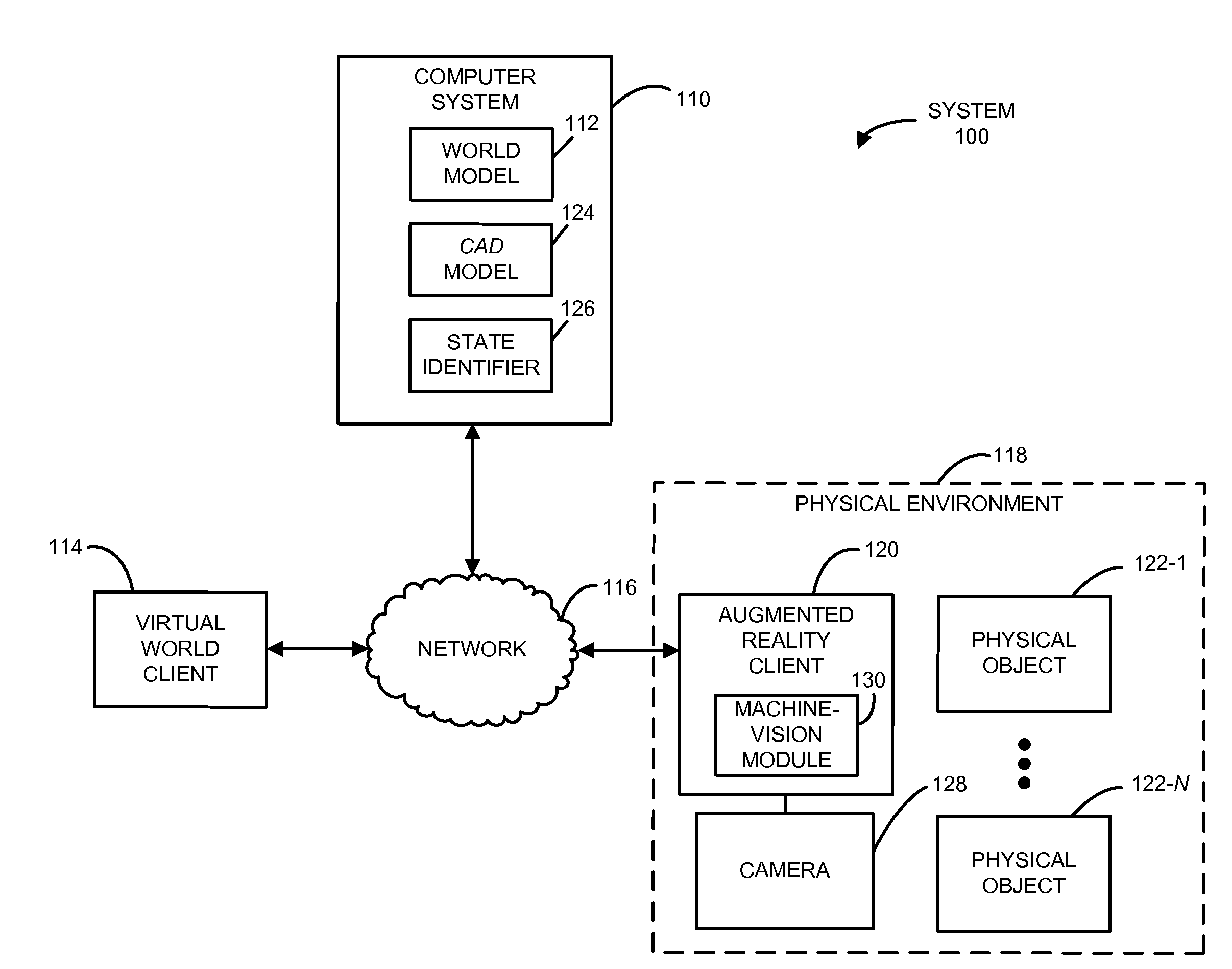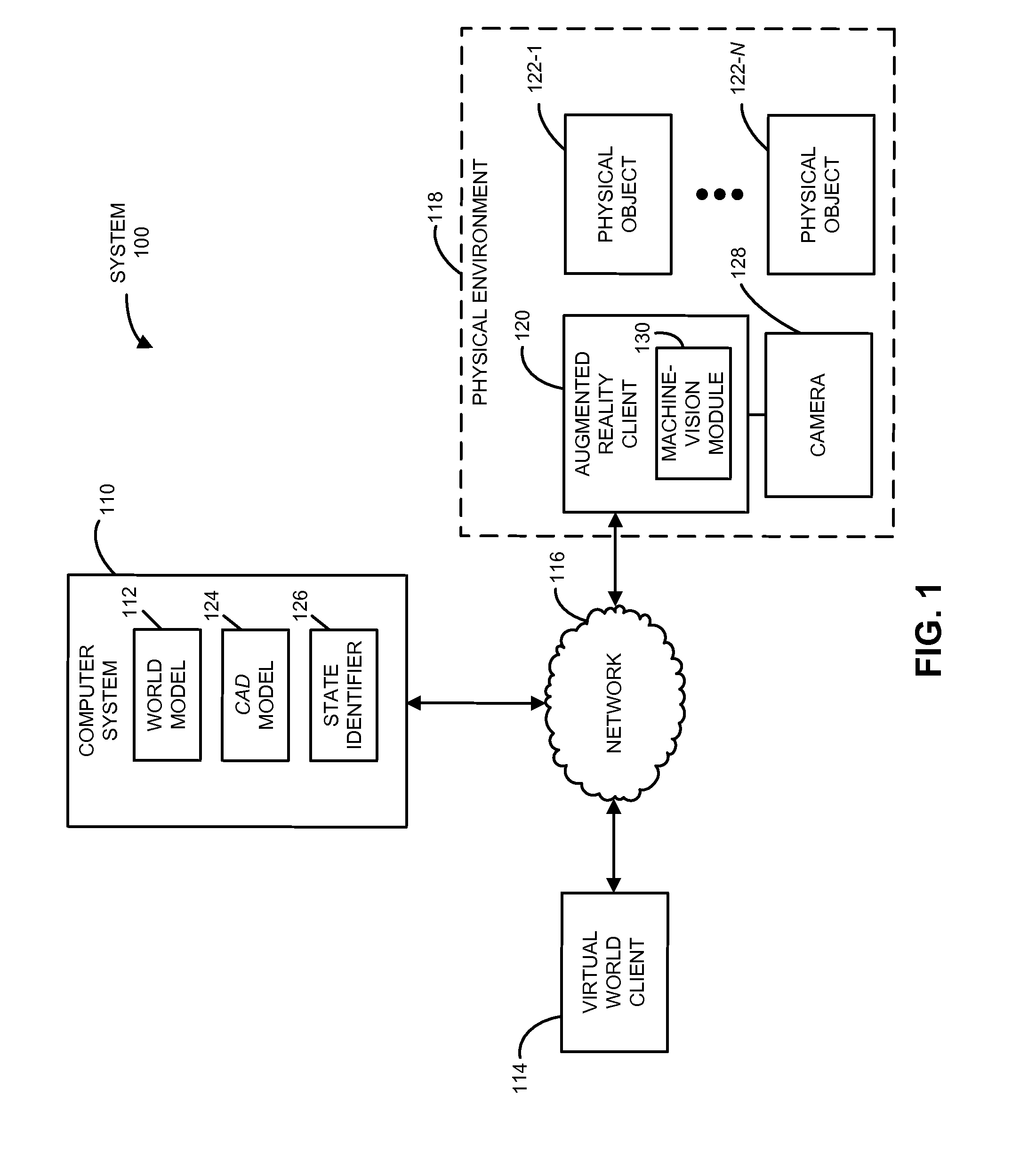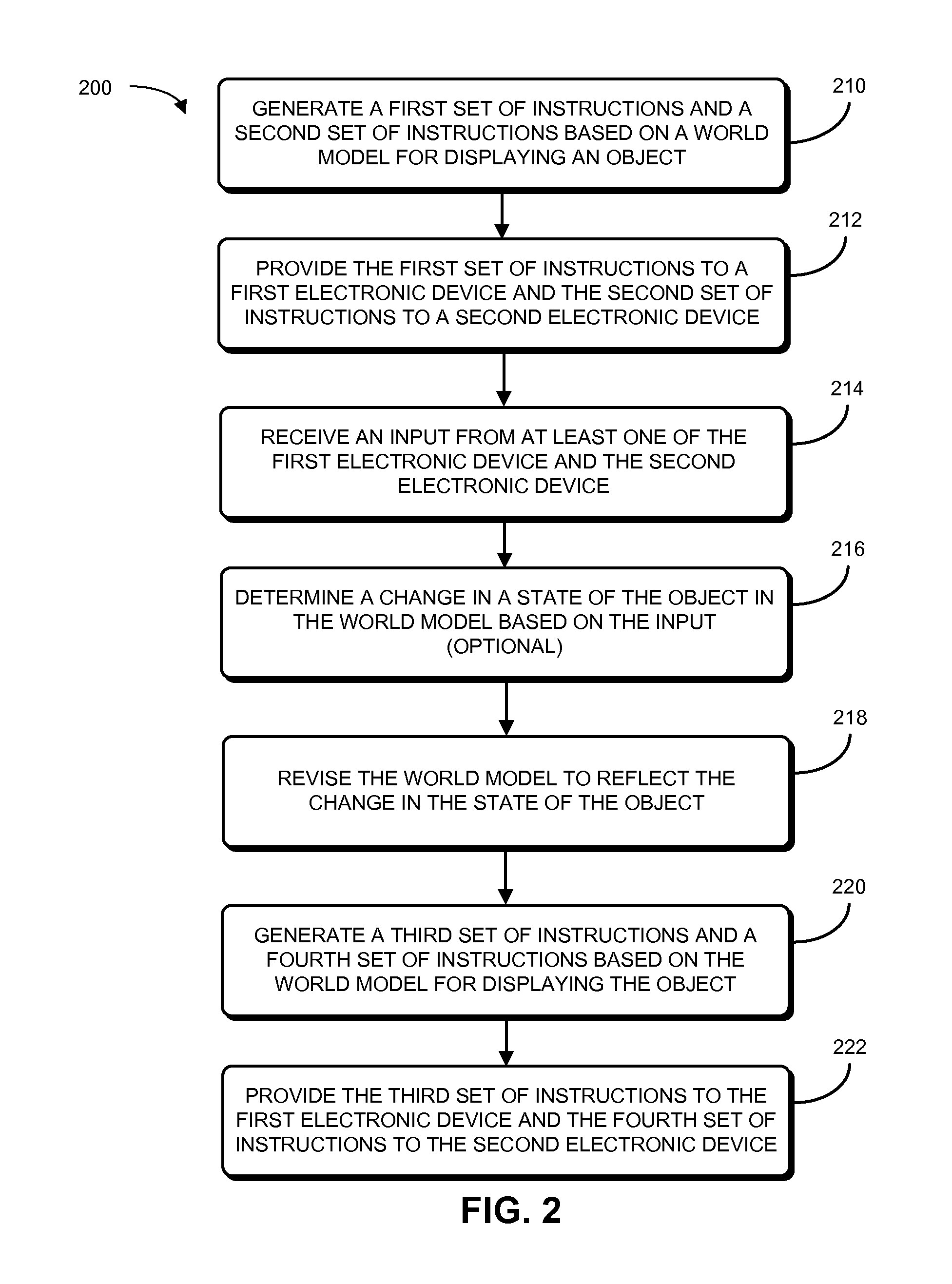Spatial association between virtual and augmented reality
a technology of applied in the field of spatial association between virtual and augmented reality, can solve the problems of insufficient information exchanged using existing communication techniques, inability to train or assist novices, and inability to achieve the spatial interrelationship between components of the device, etc., and achieve the effect of facilitating interaction
- Summary
- Abstract
- Description
- Claims
- Application Information
AI Technical Summary
Benefits of technology
Problems solved by technology
Method used
Image
Examples
Embodiment Construction
[0019]Embodiments of a system, a method, and a computer-program product (e.g., software) for maintaining a dynamic spatial association or ‘awareness’ between a virtual reality application and an augmented reality application are described. In this association technique, a world model (such as a three-dimensional space) that includes a state of an object is used to generate and provide instructions for displaying the object, via the augmented reality application, to a user in a physical environment, and instructions for displaying the object, via the virtual reality application, to another user. When an input that is associated with a change to the state of the object is subsequently received from either user, the world model is revised to reflect this change. For example, the change to the state may be specified in the input or may be determined using a state identifier. Then, revised instructions for the augmented reality application and the virtual reality application are generate...
PUM
 Login to View More
Login to View More Abstract
Description
Claims
Application Information
 Login to View More
Login to View More - R&D
- Intellectual Property
- Life Sciences
- Materials
- Tech Scout
- Unparalleled Data Quality
- Higher Quality Content
- 60% Fewer Hallucinations
Browse by: Latest US Patents, China's latest patents, Technical Efficacy Thesaurus, Application Domain, Technology Topic, Popular Technical Reports.
© 2025 PatSnap. All rights reserved.Legal|Privacy policy|Modern Slavery Act Transparency Statement|Sitemap|About US| Contact US: help@patsnap.com



